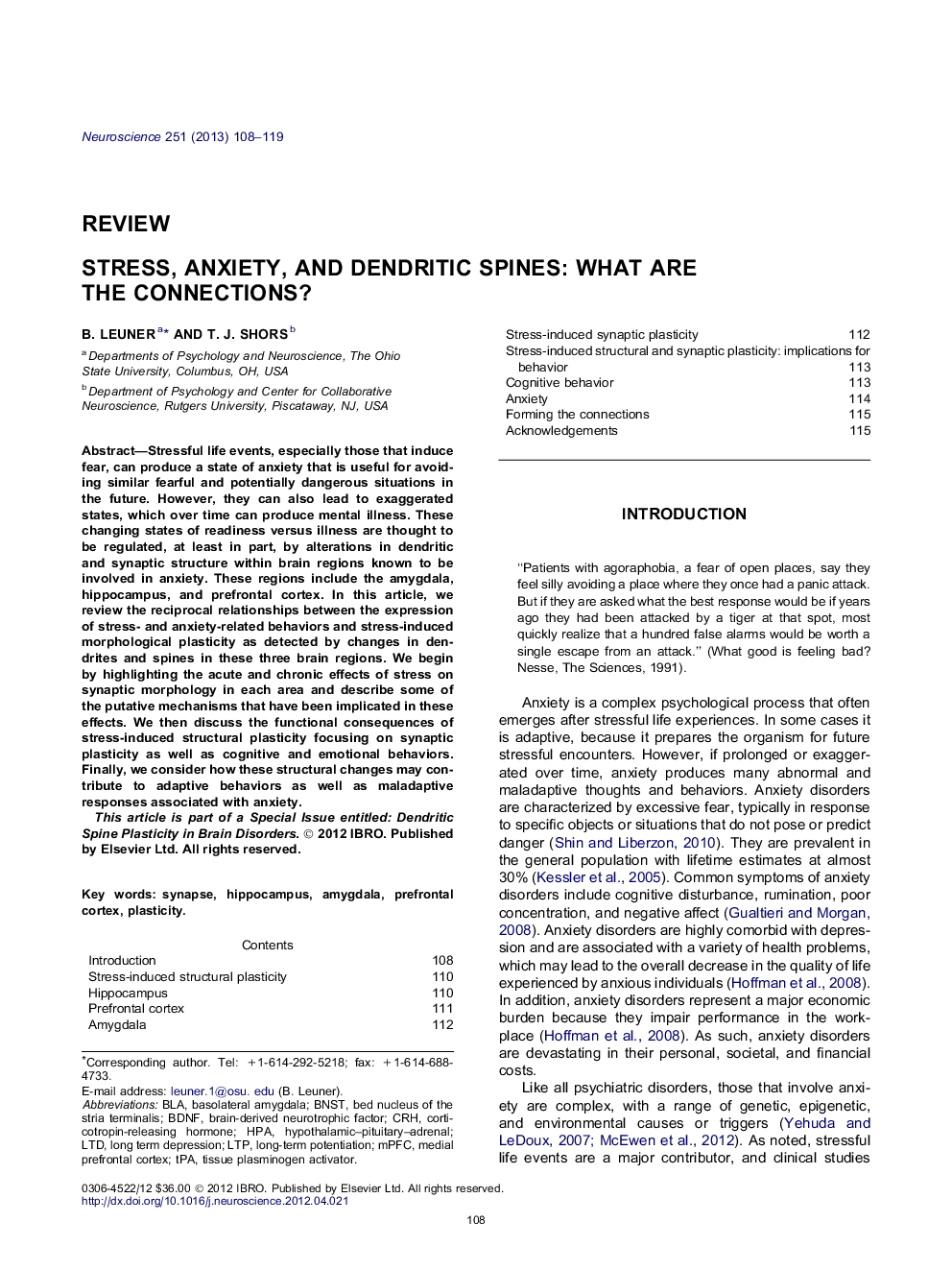| Article ID | Journal | Published Year | Pages | File Type |
|---|---|---|---|---|
| 4337878 | Neuroscience | 2013 | 12 Pages |
Stressful life events, especially those that induce fear, can produce a state of anxiety that is useful for avoiding similar fearful and potentially dangerous situations in the future. However, they can also lead to exaggerated states, which over time can produce mental illness. These changing states of readiness versus illness are thought to be regulated, at least in part, by alterations in dendritic and synaptic structure within brain regions known to be involved in anxiety. These regions include the amygdala, hippocampus, and prefrontal cortex. In this article, we review the reciprocal relationships between the expression of stress- and anxiety-related behaviors and stress-induced morphological plasticity as detected by changes in dendrites and spines in these three brain regions. We begin by highlighting the acute and chronic effects of stress on synaptic morphology in each area and describe some of the putative mechanisms that have been implicated in these effects. We then discuss the functional consequences of stress-induced structural plasticity focusing on synaptic plasticity as well as cognitive and emotional behaviors. Finally, we consider how these structural changes may contribute to adaptive behaviors as well as maladaptive responses associated with anxiety.
► Stress can produce a state of anxiety that if sustained can lead to mental illness. ► Stress also alters dendrites and spines in the hippocampus, mPFC, and amygdala. ► These structural changes may underlie adaptive and maladaptive anxiety responses.
